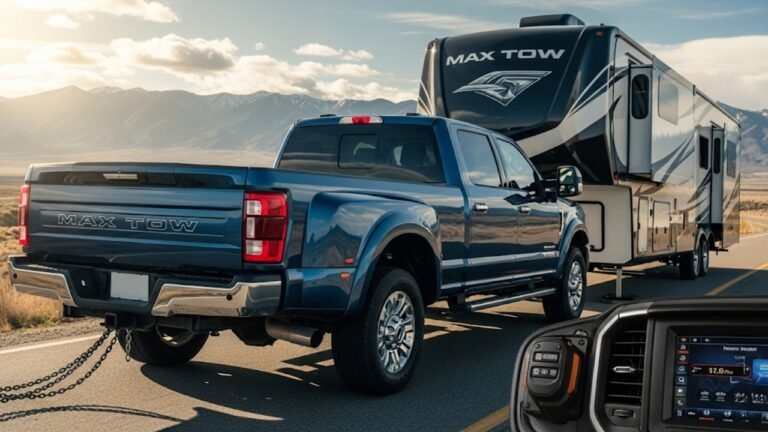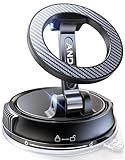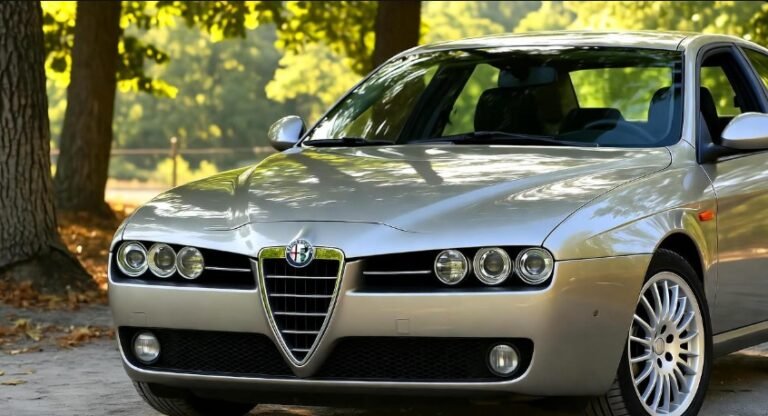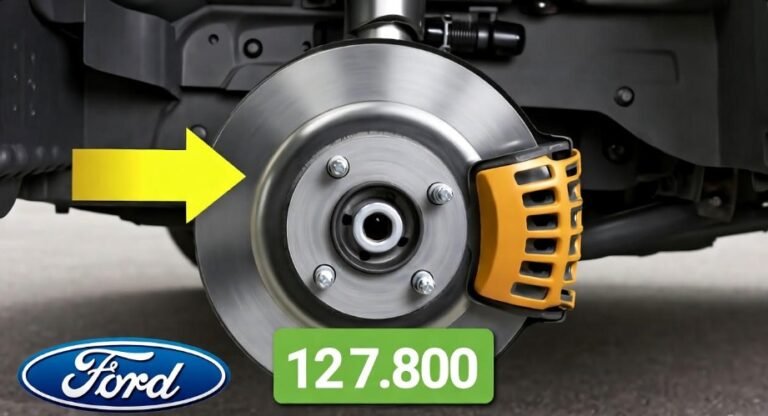Which Is Better Disc Or Drum Brakes
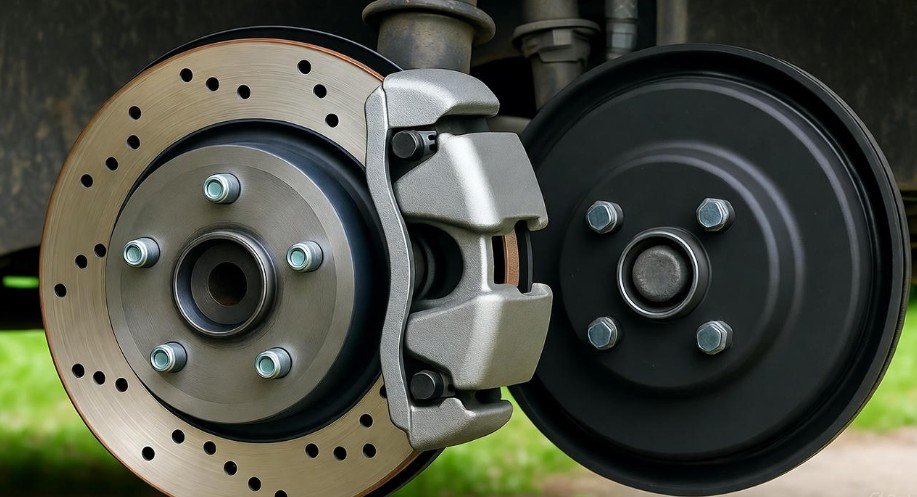
For most modern vehicles, disc brakes offer superior stopping power and performance compared to drum brakes, making them the preferred choice for contemporary driving.
In This Article
- 1 Key Takeaways
- 2 Understanding Disc Brakes: How They Work
- 3 Understanding Drum Brakes: How They Work
- 4 Disc Brakes vs. Drum Brakes: A Comparative Analysis
- 5 Why Most Cars Use Disc Brakes Today
- 6 The Case for Drum Brakes: Where They Still Shine
- 7 Common Brake System Issues and Their Fixes
- 8 Pro Tips: Extending the Life of Your Brakes
- 9 Frequently Asked Questions (FAQs)
- 9.1 Q1: Which type of brakes is safer, disc or drum?
- 9.2 Q2: Can I convert my drum brakes to disc brakes?
- 9.3 Q3: How often should brake pads and shoes be inspected?
- 9.4 Q4: What causes disc brakes to make a grinding noise?
- 9.5 Q5: Are drum brakes still used on new cars?
- 9.6 Q6: What is brake fade, and how does it relate to disc vs. drum brakes?
- 10 Conclusion
Key Takeaways
- Disc brakes provide better heat dissipation.
- Drum brakes are generally less expensive to manufacture.
- Disc brakes offer more consistent stopping performance.
- Drum brakes can be more effective in preventing dirt intrusion.
- Many vehicles use a disc/drum combination for efficiency.
- Understanding brake types helps with car maintenance.
Navigating the world of automotive components can sometimes feel like deciphering a secret code. When it comes to your car’s stopping capability, two common terms frequently pop up: disc brakes and drum brakes. You might wonder, which is better disc or drum brakes for your vehicle? This is a fundamental question for any car owner who wants to ensure their ride is safe and performs optimally. While both systems serve the same primary purpose—to bring your car to a halt—they do so with distinct mechanisms and offer different advantages. We’re here to demystify these differences, breaking down how each system works, their pros and cons, and ultimately, helping you understand which is better disc or drum brakes in various scenarios. Let’s dive into the mechanics that keep you safe on the road.
Understanding Disc Brakes: How They Work
Disc brakes are the most common type of braking system found on modern vehicles, especially on the front wheels where the bulk of braking force is applied. They are renowned for their efficiency and reliability. The system’s core components include a rotor (also called a disc), a caliper, and brake pads. When you press the brake pedal, hydraulic fluid is pushed through the brake lines, activating a piston within the caliper. This piston then presses the brake pads against the spinning rotor. The friction generated between the pads and the rotor slows down the wheel and eventually stops the vehicle.
The rotor is a flat, circular metal plate attached to the wheel hub. Many rotors are ventilated, meaning they have small fins or holes in them. These are crucial for dissipating heat generated during braking. The caliper is a clamp-like device that houses the brake pads and the piston(s). When the brakes are applied, the caliper squeezes the pads onto the rotor’s surfaces.
The effectiveness of disc brakes stems from their design. The large surface area of the rotor, combined with the direct application of friction from the pads, allows for rapid and controlled deceleration. Furthermore, the open design of most disc brake systems allows air to circulate freely, which helps to prevent the brakes from overheating. Overheating, or brake fade, is a serious issue where brakes lose their effectiveness due to excessive heat. Disc brakes are significantly better at managing this heat than drum brakes.
Understanding Drum Brakes: How They Work
Drum brakes, while less common on newer vehicles as the primary braking system, are still found on many cars, often on the rear wheels, and are a staple in some heavy-duty applications or older models. A drum brake system consists of a brake drum, brake shoes, and wheel cylinders. The brake drum is a hollow, cylindrical component that rotates with the wheel. Inside the drum, curved brake shoes are mounted. When you apply the brakes, hydraulic pressure forces the wheel cylinder’s pistons outward, pushing the brake shoes against the inner surface of the rotating drum. This friction slows and stops the wheel.
The brake shoes are typically made of a material with a high coefficient of friction, similar to brake pads. The drum itself is usually made of cast iron. Unlike disc brakes, the braking mechanism is contained within the drum. This enclosure offers some protection from dirt and debris, which can be an advantage in certain environments. However, it also means that heat generated during braking can become trapped inside the drum, making them more susceptible to overheating and brake fade under strenuous use.
Compared to disc brakes, drum brakes generally provide less consistent stopping power, especially under heavy braking conditions. The self-energizing effect of drum brakes, where the rotation of the drum helps to wedge the shoes tighter, can sometimes lead to a less modulated feel. This means the braking force might be harder to control precisely. However, drum brakes are often simpler in design and can be a more cost-effective solution for manufacturers.
Disc Brakes vs. Drum Brakes: A Comparative Analysis
When asking which is better disc or drum brakes, the answer often leans towards disc brakes for everyday driving due to their superior performance characteristics. Let’s break down their key differences across several important factors:
Stopping Power and Performance
Disc brakes generally offer superior stopping power. The direct contact between pads and rotor, along with better heat dissipation, allows them to maintain effective braking even during repeated stops or heavy braking situations. Drum brakes can experience brake fade more readily as heat builds up inside the drum, reducing their effectiveness. The stopping distance of a vehicle equipped with disc brakes is typically shorter than one with drum brakes, especially under demanding conditions.
Heat Dissipation
This is a major advantage for disc brakes. The open design allows air to flow over the rotor, carrying heat away. Many rotors are also ventilated, further enhancing cooling. Drum brakes, being enclosed, trap heat. This can lead to significant performance loss (brake fade) if the brakes are used hard for an extended period, such as during long descents on a highway. For more information on automotive braking systems, resources like NHTSA’s brake safety page offer valuable insights.
Maintenance and Durability
Both systems require regular maintenance, including brake pad/shoe replacement and brake fluid checks. However, disc brake pads are generally easier to inspect and replace than drum brake shoes. Disc brake rotors can also be resurfaced a limited number of times before needing replacement. Drum brake components, due to their enclosed nature, might be less prone to wear from external contaminants but can be more complex for a DIY mechanic to service. The durability can vary greatly depending on driving habits and material quality for both types.
Cost
Historically, drum brakes have been less expensive to manufacture than disc brakes. This is why they were very common on older vehicles and are still often used on rear wheels or less performance-oriented models. Disc brake technology has become more widespread and affordable over time, but a full disc brake setup is usually more costly than a comparable drum brake system.
Environmental Conditions
Drum brakes can offer a slight advantage in environments with heavy dust or mud. The enclosed design can help protect the friction surfaces from direct contamination. However, water can get trapped in drum brakes, potentially affecting performance until it evaporates. Disc brakes, being more exposed, can be more susceptible to damage from harsh dirt or debris, but they also tend to clear water more effectively due to centrifugal force as the rotor spins.
Here’s a summary table to help visualize the differences:
| Feature | Disc Brakes | Drum Brakes |
|---|---|---|
| Stopping Power | Generally superior, especially under heavy use. | Adequate for normal driving, but can fade. |
| Heat Dissipation | Excellent, due to open design and ventilation. | Poor; heat can build up inside the drum. |
| Performance Consistency | More consistent, less prone to fade. | Can be inconsistent, especially when hot. |
| Maintenance Accessibility | Easier inspection and replacement of pads. | Can be more complex to service. |
| Cost | Typically more expensive to manufacture and replace. | Generally less expensive. |
| Protection from Elements | More exposed to dirt and water. | Enclosed, offering some protection from debris. |
| Common Application | Front wheels on most vehicles, all wheels on high-performance cars. | Rear wheels on some cars, older vehicles, some heavy-duty trucks. |
Why Most Cars Use Disc Brakes Today
The automotive industry has largely embraced disc brakes as the superior technology for modern vehicles. This shift is driven by several factors, primarily the demand for improved safety and performance. As vehicles have become heavier and capable of higher speeds, the need for more effective and reliable braking systems has grown. Disc brakes meet these demands by offering:
- Enhanced Safety: Shorter stopping distances mean a critical safety advantage in emergency situations. This is crucial for protecting drivers, passengers, and other road users.
- Consistent Performance: Drivers expect their brakes to work reliably every time, regardless of driving conditions. Disc brakes provide this predictability, performing well in both dry and wet conditions, and resisting the effects of heat buildup.
- Technological Integration: Disc brakes integrate seamlessly with advanced braking technologies like Anti-lock Braking Systems (ABS) and Electronic Stability Control (ESC). These systems rely on precise and rapid brake actuation, which disc brakes are better equipped to provide. For instance, ABS works by rapidly pulsing the brakes to prevent wheel lock-up, a process that requires quick response times.
While cost is always a consideration, the benefits of disc brakes in terms of safety and performance have made them the standard for the vast majority of new vehicles sold in the USA and across the globe. The innovation in materials and manufacturing has also made disc brakes more durable and cost-effective than ever before.
The Case for Drum Brakes: Where They Still Shine
Despite the dominance of disc brakes, drum brakes haven’t disappeared entirely. They still hold advantages in specific applications, which is why they remain relevant. Their primary strengths lie in:
- Cost-Effectiveness: For vehicles where extreme braking performance isn’t a priority, drum brakes offer a more budget-friendly solution. This is particularly true for many entry-level cars or situations where rear brakes bear less braking load.
- Parking Brake Integration: In many vehicles, the parking brake (or emergency brake) mechanism is integrated directly into the rear drum brake assembly. This simplifies the overall design and manufacturing process. The shoes in the drum can be actuated mechanically by the parking brake lever or pedal.
- Protection in Harsh Environments: For vehicles that frequently operate in very dusty, muddy, or corrosive environments, the enclosed nature of drum brakes can offer superior protection to the friction surfaces from external grit and grime. This can potentially extend the life of the shoes in such conditions, though cleaning and maintenance are still crucial.
Many vehicles today utilize a combination of disc and drum brakes. Typically, disc brakes are found on the front wheels (which handle about 70-80% of the braking force) and drum brakes on the rear. This setup optimizes braking performance, leverages the cost-effectiveness of drum brakes for the rear, and often incorporates the parking brake function seamlessly.
Common Brake System Issues and Their Fixes
Whether you have disc or drum brakes, understanding common problems can help you identify potential issues early. Here are a few you might encounter:
Squealing Noises
- Disc Brakes: Often caused by worn brake pads, debris between the pad and rotor, or glazed pad material. Sometimes, a simple cleaning or lubrication of the caliper hardware can resolve it. If pads are worn, replacement is necessary.
- Drum Brakes: Can be caused by worn or glazed shoes, dust accumulation, or improper adjustment. Similar to disc brakes, cleaning and proper lubrication of contact points can help. Worn shoes will need replacement.
Spongy Brake Pedal
This usually indicates air in the brake lines or a problem with the master cylinder. Brake fluid is supposed to be incompressible. If you feel excessive give in the pedal before it engages, it’s a sign the hydraulic system needs attention. Bleeding the brakes to remove air is a common fix. If the issue persists, the master cylinder might need replacing. Air in the brake lines is a serious safety concern and requires immediate attention. You can learn more about brake fluid maintenance from resources like Cars.com.
Vibrating Pedal or Steering Wheel During Braking
This symptom is almost always associated with warped brake rotors (disc brakes). When rotors become uneven due to excessive heat, they cause the brake pads to grab unevenly, leading to vibrations. The typical fix is to replace the rotors. In some cases, rotors can be resurfaced, but this is only an option if they are still within the minimum thickness specifications.
Car Pulling to One Side When Braking
This can indicate uneven wear or a problem in the braking system on one side of the car. It could be a stuck caliper (disc brakes), a collapsed brake hose, or unevenly worn brake shoes (drum brakes). A thorough inspection of both sides of the axle is necessary to diagnose and fix the problem.
Pro Tips: Extending the Life of Your Brakes
Taking good care of your brakes can save you money and ensure your safety. Here are a few tips:
Pro Tip: Avoid riding your brakes on long downhill stretches. Instead, use a lower gear to help control your speed and reduce brake wear.
Frequently Asked Questions (FAQs)
Q1: Which type of brakes is safer, disc or drum?
Disc brakes are generally considered safer due to their superior stopping power, better heat dissipation, and more consistent performance, especially under demanding conditions. They are less prone to brake fade.
Q2: Can I convert my drum brakes to disc brakes?
Yes, it is possible to convert drum brakes to disc brakes, especially on the rear axle. Conversion kits are available. However, this can be an expensive modification and should be done by a qualified mechanic to ensure proper function and safety.
Q3: How often should brake pads and shoes be inspected?
It’s recommended to have your brake pads and shoes inspected at least once a year, or every oil change, and certainly any time you notice unusual noises or performance changes. Your mechanic will advise on specific intervals based on your vehicle and driving habits.
Q4: What causes disc brakes to make a grinding noise?
A grinding noise typically means the brake pads are completely worn down, and the metal backing of the pad is grinding against the metal rotor. This is a serious issue that can cause significant damage and requires immediate replacement of both pads and rotors.
Q5: Are drum brakes still used on new cars?
Yes, drum brakes are still used on many new cars, but typically on the rear wheels, often in conjunction with disc brakes on the front. They are also common on some older models and heavy-duty trucks. Their use is generally for cost-saving and parking brake integration.
Q6: What is brake fade, and how does it relate to disc vs. drum brakes?
Brake fade is the reduction in braking effectiveness due to overheating. Disc brakes dissipate heat much better than drum brakes, making them far less susceptible to fade, especially during heavy or prolonged braking like descending a steep hill.
Conclusion
So, when it comes down to asking which is better disc or drum brakes, for the vast majority of modern drivers and vehicles on American roads, the answer points clearly towards disc brakes. Their inherent advantages in stopping power, heat management, and consistency translate to a safer and more responsive driving experience. While drum brakes have their place, offering cost-effectiveness and practical solutions like parking brake integration, they generally don’t match the overall performance of disc brakes. Understanding these differences empowers you to appreciate your vehicle’s engineering and to make informed decisions about its maintenance. Whether your car boasts disc brakes all around, or a combination of disc and drum, ensuring they are well-maintained is paramount for your safety and peace of mind on every journey across the USA.


